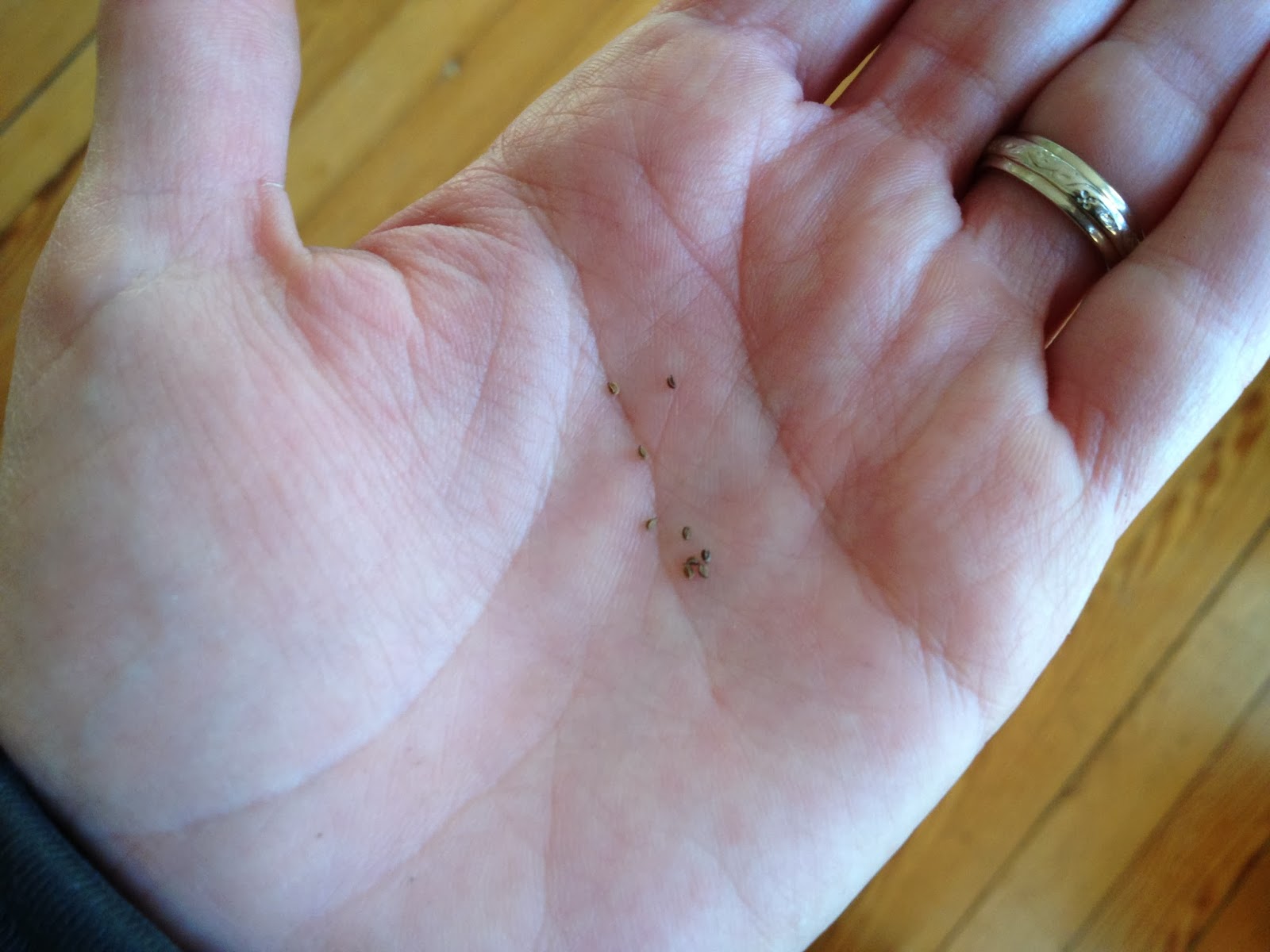Celery and Parsley From Seed
The polar vortex is at it again this week, but we can't let that stop us from getting ready for spring planting! This year we are trying some new pants from seed: celery and parsley. In the past we have always bought transplants at a local nursery, but it's been getting hard for us to find celery. (You can get it in Methuen at Pleasant Valley Gardens — an awesome nursery, but a little far to go for just one six-pack.) So I bought some seed to give it a go on our own this year.
We've avoided it until now because celery and parsley are considered pretty difficult to start from seed. Take a look at how tiny they are, and you start to get an idea why:
That's celery seed in my hand; parsley is a little bit bigger. Parsley is so picky that they recommend soaking it overnight in warm water, so I did:
Since we hardly need a whole flat full of celery or parsley, I decided to start these in some seed starting pellets instead. They are fun and easy to use, and make planting a few individual plants mess-free, which is nice. It starts out small:
But then you arrange them in a tray (ours is an old take out container), add some warm-to-hot water to each one, and watch them grow:
Once they are puffed up from soaking up the water, just put a seed (or a bunch — these tiny seeds were hard to manage, so I'll definitely be thinning seedling later) in the little, pre-made hole. I used my pinky to scrape just a tiny bit of soil over the hole when I was done.
Then cover the seeds in plastic wrap and wait until they sprout on a sunny shelf:
The seed packet said that parsley can take a good three weeks, so we've got a while to wait. The instructions for celery were even more persnickety, suggesting warm soil temperatures for the first week and then cool temperatures and indirect sun, but still lots of light.
Sigh.
To at least try to regulate the soil temperature, I have been adding very warm water to the tray for the pellets to soak up. We'll see if that helps. Or if it actually matters.
If and when they sprout, you take off the plastic. Once the plastic is gone, it's important to check the water in the tray regularly, since they'll dry out faster with the increased air circulation.
Hopefully we'll have something to show for April!








Comments
Post a Comment